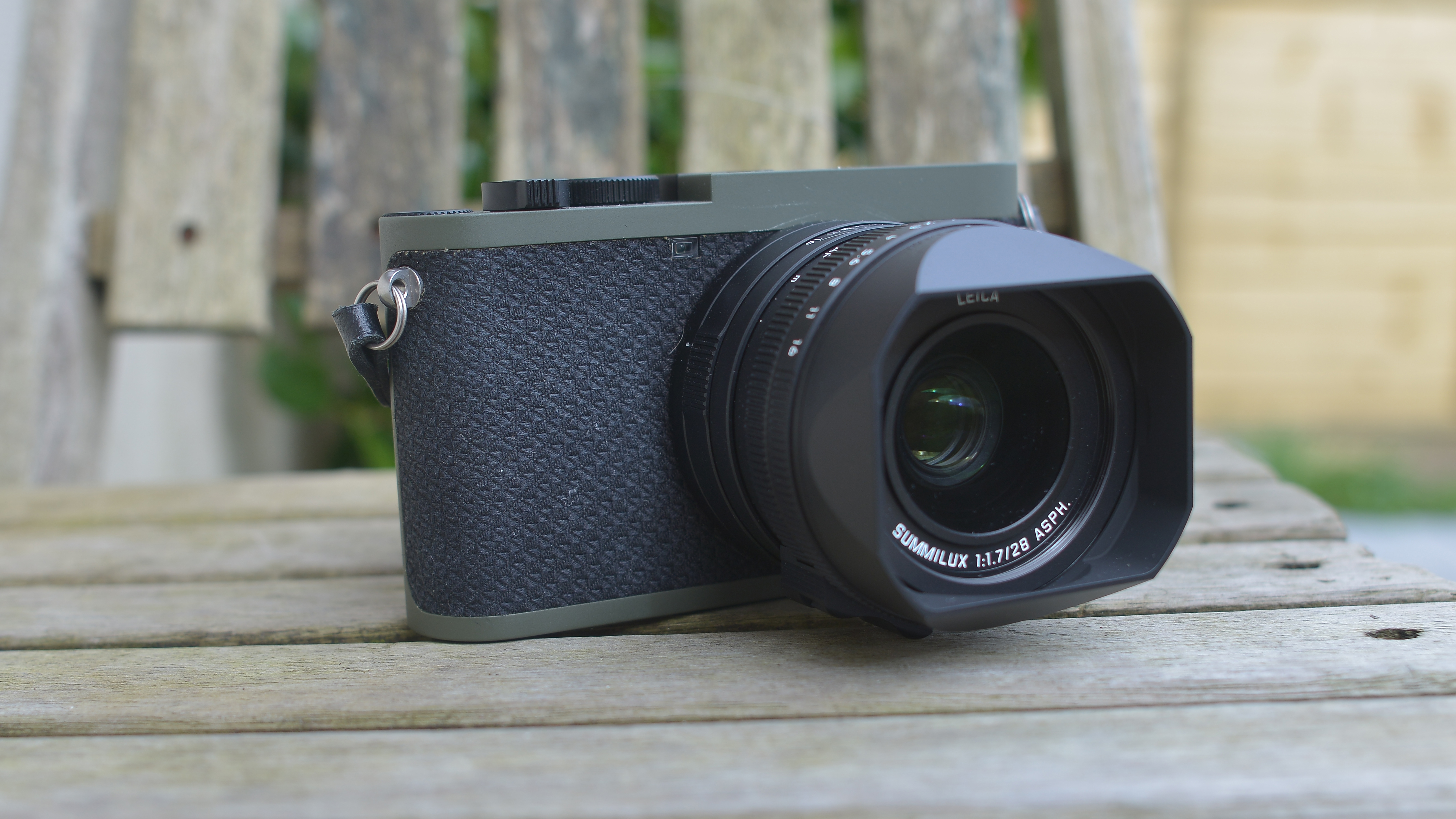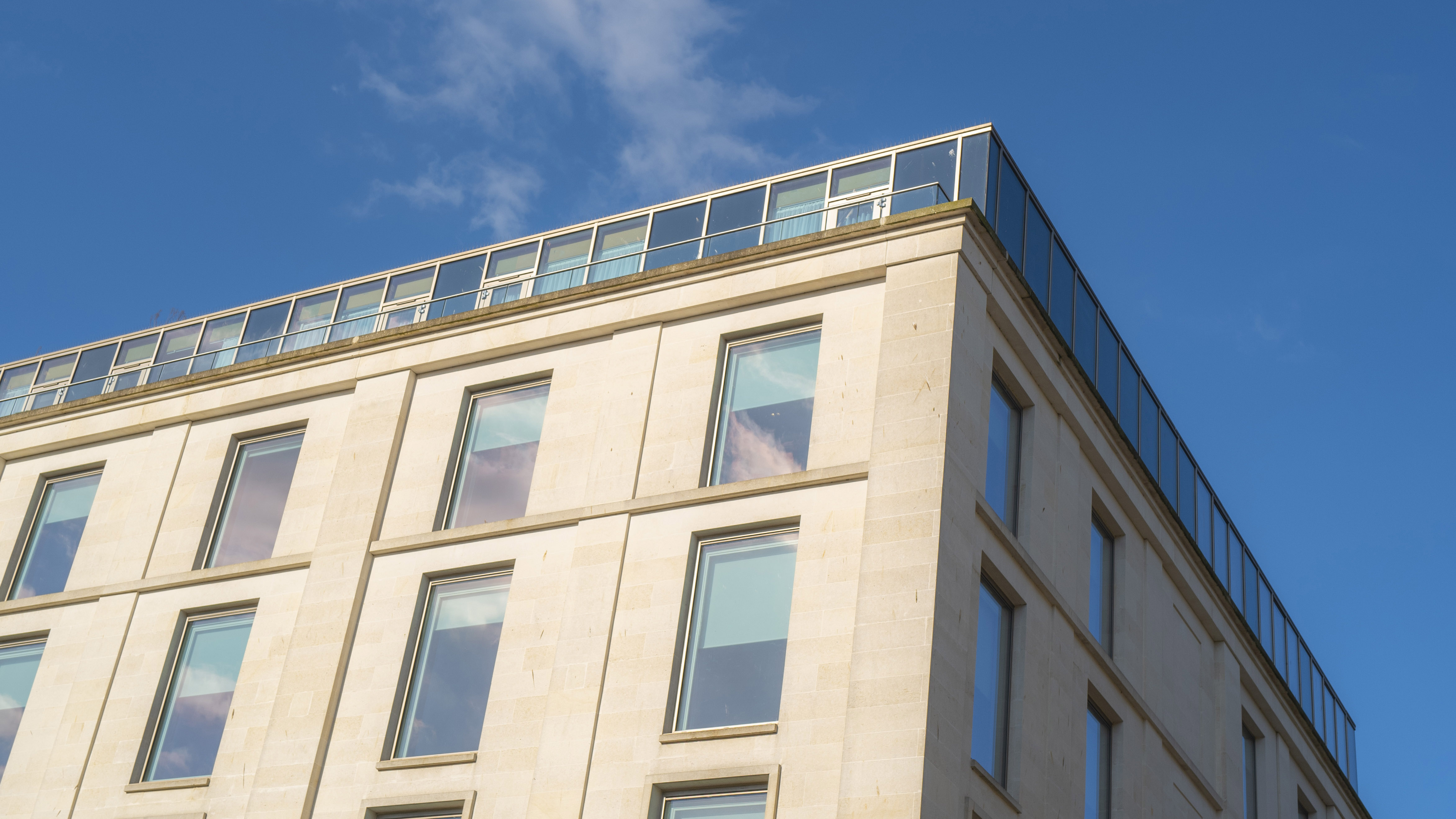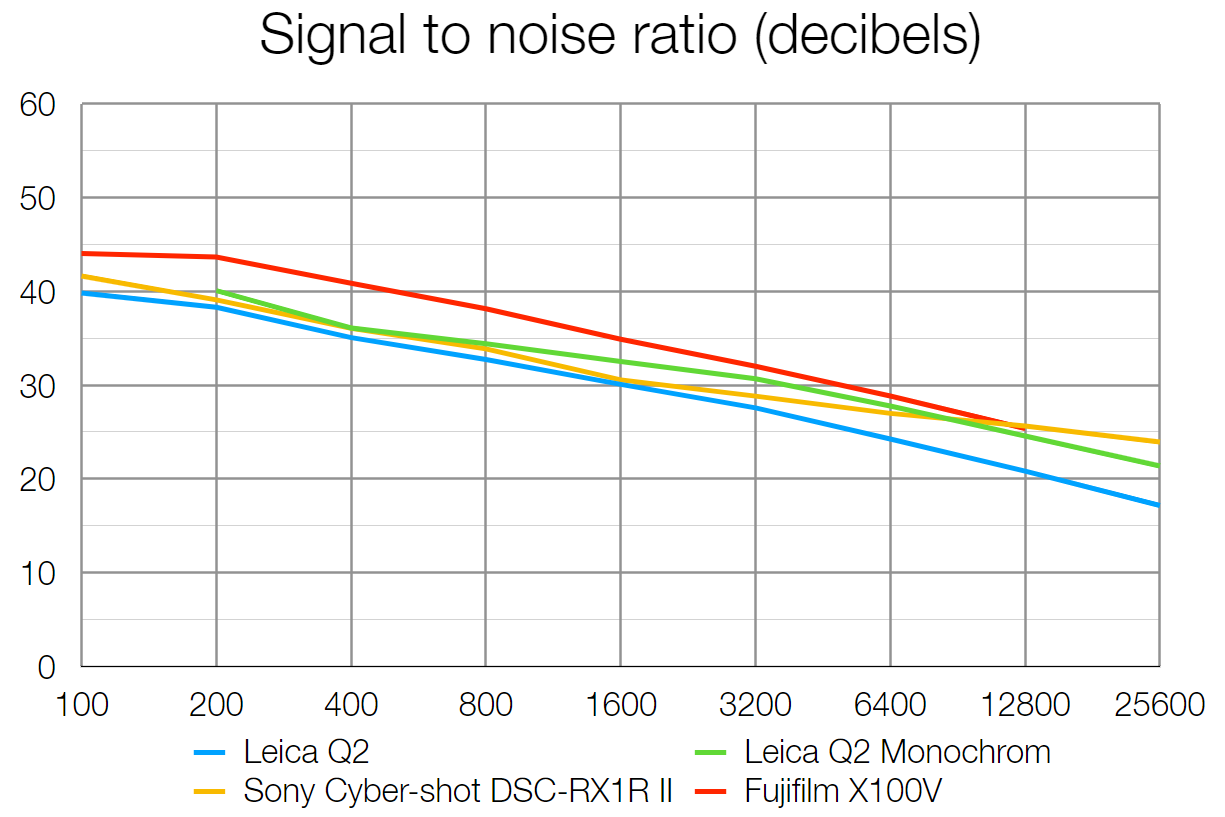Digital Camera World Verdict
The Leica Q2 is one of our favorite compact cameras... so it is no surprise that we really enjoy the Leica Q2 Reporter. Yes, it is expensive – but if you want the absolute best in luxury cameras, without the camera shouting that it is a luxury camera, this is it. It is equally at home as a fully manual street camera, or as an automatic luxury point-and-shoot that produces stunning 47 megapixel images! If you have the money, want a camera that can blend into any surroundings and you’re looking for something compact with exceptional image quality, 4K cine video if needed, all in one body, but are willing to give up a tilting screen, buy the Leica Q2 Reporter – you won’t regret it
Pros
- +
Superb image quality
- +
Amazing auto and manual focus
- +
Great build quality
Cons
- -
EVF lag (sometimes)
- -
Fixed LCD screen
Why you can trust Digital Camera World
The Leica Q2 has been in our list of best compact cameras for some time, in spite of its luxury price tag, and it has been there for good reason – we love it, and not least for its image quality. Now the limited edition Leica Q2 Reporter is here, but does it steal the original Q2's thunder?
Leica's camera range could get confusing, so here's a quick run-down. This German brand is probably best known for its Leica M rangefinders which take interchangeable M-series lenses. The Q2 Reporter shares the same 'look' as the M-series, but its a different design – a compact camera with a fixed lens.
Leica also makes SL-series L-mount mirrorless cameras, including the professional-level Leica SL2 (which has a lot in common with the Panasonic Lumix S1R). There's also the rarely-see Leica S3 medium format SLR.
The Q2 Reporter reviewed here is far from cheap, but it is probably the most affordable Leica camera you can get right now!
Specifications
Sensor: 47.3 megapixel full frame CMOS
Image processor: Maestro II
AF points:
ISO range: 64 to 50,000
Max image size: 8,368 x 5,584
Metering modes: Spot, Center-Weighted, Multi-Field
Video: 4K UHD at 29.97 or Cine 4K at 24p or 1080P at 119.88p
Viewfinder: Electronic Viewfinder: 3,680,000 dots, 100% coverage
Memory cards: SD/SDHC/SDXC, UHS-II
LCD: 3" fixed touchscreen, 1.4m dots
Max burst: 10 fps
Connectivity: Wi-Fi, Bluetooth
Size: 130 x 80 x 91.9 mm
Weight: 718g (battery)
Key Features
The Leica Q was one of the best selling in Leica’s illustrious history and this wave of new adopters and upgraders continued with the releases of its successor the Leica Q2. Now the Q2 series features a dedicated Monochrom version and the new Reporter "Green" colorway has been added it to the list of this compact powerhouse hybrid, in the form of the Leica Q2 Reporter.
Essentially, the Q2 Reporter is the same as the original Q2. It still features the amazingly sharp Summilux 28mm f/1.7 Asph wide-angle lens and features full manual control, so those coming from the Leica M system need not worry – you can still manually focus the lens if you want to, but you don’t really need too.
The best camera deals, reviews, product advice, and unmissable photography news, direct to your inbox!
Along with the reporter colorway is the omission of the red dot Leica logo, which you will only ever be see on the Q2 reporter when the camera is powering off. All lens distance scales and focal length colours are now in white and grey to give a cleaner, more neutral look. Of course, you cannot forget that this reporter version brings across the dark green color in matt, which is similar to Leica's "Safari" editions, making it more inconspicuous than its counterparts, allowing the photographer to go unnoticed when covering reportage or documentary style photography, according to Leica.
Whether this really makes you more unrecognisable is up to the subject matter you are shooting, but there is no denying that the Q2 in this colorway looks absolutely stunning!
For the Reporter variant, the textured leather grip that surrounded the Q2 has gone and is replaced with Kevlar that has been designed to “wear” as you use the camera, so the texture and weave of the Kevlar becomes slightly fibrous, which will give you better grip of the camera the more you use it, which is an interesting concept – I like it.
As well as being a great stills camera, the Q2 Reporter, like the original Q2, offers 4K video shooting. You get a choice of standard 4K (3840x2160 pixels) or you can opt for Cinema 4K with a resolution of 4096x2160 pixels. You can choose either 30fps or 24fps frame rates with 4K, but are limited to 24fps with C4K. Switch down to Full HD, and you get useful slo-mo options of 120fps or 60fps. Even though I see this camera targeted at photographers, having these video options as someone in the field out reporting and having the ability on the fly to tap the touchscreen and quickly take a video can be very handy, especially for multi-media news coverage.
Build and handling
Like the original Q2, the Q2 Reporter is equipped with an EVF that is a pure joy to use. Being a Leica M user and used to rangefinder focusing, it did take me a small amount of time to get used to it, but once up to speed the electronic viewfinder, I enjoyed its automatic on/off function when you put the finder up to your eye, and you can see a lot of detail thanks to its 3.68 million dots, and once you take an image you are presented with it in the viewfinder to make sure you have hit critical focus.
However, I must note that if you have this function on and set to single image capture, rather than continuous, and you want to quickly take 3 or 4 images in a row of some action that's happening around you, the EVF and it will lag slightly, showing you the image you have taken, rather than seeing what is happening, instead of “blackout” think more image obstruction – it's a small point, but one I think should be noted if you prefer to shoot in single image capture like I do.
The LCD remains a 3-inch 1.04 million dot affair and has the distinct advantage of being touch sensitive, so you can control features without the need to dig into menus unnecessarily, which is great when you are constantly on the move.
Liveview is crystal clear and touch-to-focus is again another great feature to have on a camera this compact. One drawback on the Q2 Reporter is that the screen, however beautiful and streamlined, is not movable, so if you're a user that shoots a lot in liveview and likes having a tilting screen, the Q2 Reporter might not be for you.
Autofocus is fast and responsive and I found it always hit critical focus where I wanted it to be. A good range of autofocus options are available, which include Multi point, One Point, Tracking, Face Detection, Touch AF etc. But the real party trick is the ease with which you can switch to and from manual focus by simply pushing down on the focus tab, releasing the lens for full manual operation (this will enable magnification and focus peaking if you want it) and by simply returning the focus past infinity the lens will return to full AF operation – blissful simplicity!
As well as this focus ring, and the mechanical aperture ring, which are silky smooth as you would expect from Leica, there is also the macro ring, which when engaged allows you to focus from 0.17m to 0.3m – although with such a wide lens, you don't get a particularly impressive magnification ratio.
Performance
Here are some sample images shot with the Q2 Reporter.
Lab Results
For our lab data comparison, we compared the Leica Q2 to its main full-frame compact camera rival: the Sony Cyber-shot RX1R Mark II. The Leica Q2 Monochrom is featured too, in order to establish whether its lack of color data can improve image quality in other areas. As full-frame compact cameras aren't exactly common, we've also included the Fujifilm X100V as another example of a premium retro-styled compact camera, albeit with an APS-C sensor.
Resolution:
Resolution is measured using standardized text charts which give results in line widths / picture height, which is independent of sensor size.
No surprises here: the 40+MP full-frame cameras offer clearly superior resolving power to the APS-C X100V. Interestingly the Q2 Monochrom does resolve slightly more fine detail than the regular Q2, and significantly more at higher ISOs, where the Q2 generates noticeably more noise.
Dynamic range:
Dynamic range is a measure of a camera's ability to record extreme brightness ranges and still retain detail in the brightest and darkest parts of the scene. It's measured in EV (exposure values, or 'stops').
At lower sensitivities - up to ISO800 - the Q2's dynamic range is respectable and comparable to rival cameras. However, at ISO 1600 and above, both Leica cameras capture noticeably less dynamic range than the Sony and Fujifilm cameras on test, though the Q2 Monochrom demonstrates that losing color data gives it a slight edge over the regular Q2 in terms of dynamic range.
Signal to noise ratio:
This test compares the amount of random noise generated by the camera at different ISO settings as a proportion of the actual image information (the 'signal'). Higher values are better and we expect to see the signal to ratio fall as the ISO is increased.
All three full-frame cameras are closely matched for image noise levels at lower sensitives, though the Q2 generates progressively more noise than the competition as ISO sensitivities increase. The Q2 Monochrom is again superior to the Q2 in this test, with its images being appreciably less noisy once you get above ISO 800.
Verdict
The Leica Q2 Reporter retails for and extra $300 / £275 / AU $500 when compared to the regular Leica Q2. Is this increase worth it? That completely depends on the user.
Personally I really like the dark green paint and Kevlar grip, so I would say yes, others might want to at least have the Leica logo present when spending as much as this on a camera – personal tastes dictate the price you must pay.
The Leica Q2 is one of our favorite compact cameras... so it is no surprise that we really enjoyed the Leica Q2 Reporter. Yes, it is pricey – but if you want the absolute best in luxury cameras, without the camera shouting that it is a luxury camera, this is it. It is equally at home as a fully manual street camera, or as an automatic luxury point-and-shoot that produces stunning 47 megapixel images!
If you have the money, want a camera that can blend into any surroundings and you’re looking for something compact with exceptional image quality, 4K cine video if needed, all in one compact body, but are willing to give up a tilting screen, buy the Leica Q2 Reporter – you won’t regret it
Read more:
• Best digital compact cameras
• Leica M11 review
• Best Leica cameras
• Best full-frame compacts

For nearly two decades Sebastian's work has been published internationally. Originally specializing in Equestrianism, his visuals have been used by the leading names in the equestrian industry such as The Fédération Equestre Internationale (FEI), The Jockey Club, Horse & Hound, and many more for various advertising campaigns, books, and pre/post-event highlights.
He is a Fellow of the Royal Society of Arts, holds a Foundation Degree in Equitation Science, and holds a Master of Arts in Publishing. He is a member of Nikon NPS and has been a Nikon user since his film days using a Nikon F5. He saw the digital transition with Nikon's D series cameras and is still, to this day, the youngest member to be elected into BEWA, the British Equestrian Writers' Association.
He is familiar with and shows great interest in 35mm, medium, and large-format photography, using products by Leica, Phase One, Hasselblad, Alpa, and Sinar. Sebastian has also used many cinema cameras from Sony, RED, ARRI, and everything in between. He now spends his spare time using his trusted Leica M-E or Leica M2, shooting Street/Documentary photography as he sees it, usually in Black and White.

















